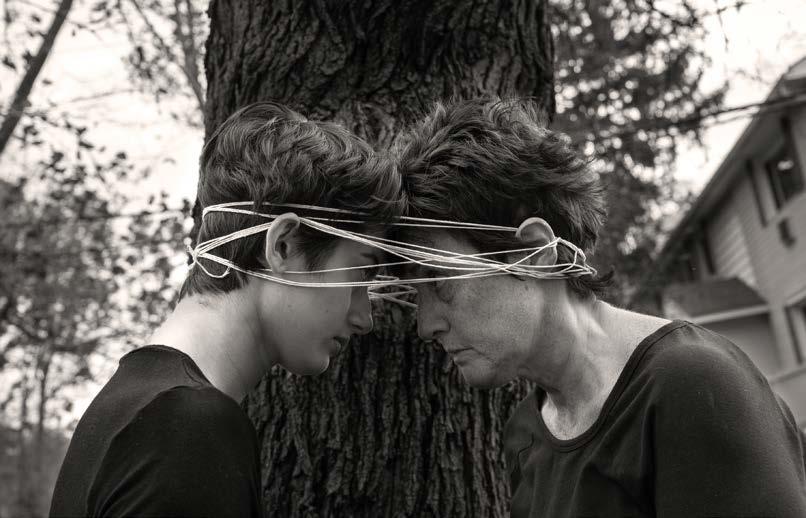
3 minute read
Emily Brannan
emily brannan in Conversation with JessiCa BeCkwith
Jessica Beckwith: I’m curious about the materials themselves that you use and your process of finding yourself in or through those materials. Absence and presence—how does that dichotomy play into your work?
Emily Brannan: In these works specifically, I used my dad’s old denim jackets that he wore as a teenager and in his early 20s and I also used the imagery of the circle worn in the back pockets of his jeans from his chewing tobacco cans that I would see all the time growing up. I started working with the jackets because I have worn them for years and always thought about who my father was when he was wearing them and how we would/could relate to each other if we were peers. I think the jackets have always had me mentally trying to search for a relationship or a common ground with my father. In the work, I took one jacket and made a mold of it, tore it apart into a pulp, and then cast it back into the mold rendering it into a useless representation of itself. I did something similar with the other in that I coated it in cement. With the pocket, I wore the hole in it by hand with sandpaper and files. The works reflect that absence of a relationship, of something functional. The jacket doesn’t serve its purpose, but you can still see what it should be and what’s left represents that hollow relationship I have with my father as a result of my childhood. So absence and presence are layered throughout the work not just materially, but also in the materials themselves and what they represent for me.
In the process of deconstructing these works, rendering them useless, I felt as though it was a sort of burial of my mental struggle to build a relationship with my father. Turning the jackets into works of art that I can no longer physically put on has been a very healing experience for me. In this body of work I have been exploring how making art helps individuals heal from trauma and I feel these works have been very effective in that way. I have been able to take these objects and transform their context and prevent them from, literally and figuratively, weighing on me.
JB: It seems that by removing the presence of individual identity you distill down and access an essence that resonates with greater power than representing the individual presence. What were you exploring by doing that? I’m curious if in eliminating the individual you were seeking to connect to something universal?
EB: The removal of individual identity in the works makes them more referential to trauma and the effects of it rather than just about my individual experience with it. I feel that everyone experiences their own trauma and there are a million factors that determine what makes something traumatic and that set is different for everyone. The work was very personal and helped me work through a lot, but I wanted the final imagery to be removed from myself so that the viewer was able to insert themselves and their experiences into the work as well.
Emily Brannan
MFA Sculpture
I’ll Put You in a Headlock and Give You a Tour of the Parking Lot 2021. Denim, PVA glue, steel buttons, 36 x 32 x 1/2 in.

Y’ain’t 2020. Denim, 7 x 5 x 4 in. Doggone it! 2021. Denim, steel, cement, 24 x 32 x 6 in.











